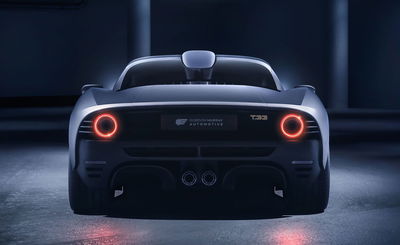Gordon Murray Wants To Make Supercars Lighter, Greener

In nearly 60 years of designing race and road cars, Gordon Murray has made lightness his goal in pretty much everything he’s done. This, in a world where a two-tonne car is a frighteningly normal thing, is something we can very much get behind.
Now, Murray’s company, the Gordon Murray Group, which oversees the Automotive division that makes the T.50 and T.33, the newly-announced Special Vehicles wing, and an Advanced Engineering division, has announced it’s working on a new automotive chassis structure that could not only make Murray’s future supercars lighter but bring some much-needed weight reduction to the whole car industry.

The architecture is known as Project M-LightEn (cherry-picking parts of the phrase ‘Monocoque architecture – Lightweight and Low Energy’) and is being developed alongside carbon fibre experts Carbon ThreeSixty, aluminium specialist Constellium and London’s Brunel University.
It’s hoped that the final product will be a new aluminium monocoque chassis that’s not only stronger and lighter than similar structures made today but also 50 per cent less carbon-intensive to produce.

The latter part of that equation will come from 80 per cent of the chassis’ high-strength extrusions being made from recycled, UK-sourced scrap aluminium, as well as through the use of AI to optimise the structure’s design. Meanwhile, Carbon ThreeSixty’s carbon fibre manufacturing process is said to produce almost no waste.
According to GMG’s strategy and business director, Jean-Phillipe Launberg, “Project M-LightEn will enable decarbonisation across the wider automotive industry by shortening and de-risking the path to market for innovative new materials and processes.”

That can only be a good thing, but we’re a bit more intrigued by what it could mean for Murray’s supercars. GMG says the tech will allow future performance cars to be lighter still – no mean feat when the T.50’s dry weight is already under a tonne, and the more comfort-focused T.33’s is barely any higher at 1090kg.
As well as the obvious benefits to dynamics, wear and tear and fuel efficiency, Project M-LightEn’s performance car applications could, says GMG, give the next generation of GMA products the lowest life-cycle CO2 emissions of any supercar. In other words, whatever comes after the T.50 and T.33 could not only be even better to drive, but kinder to the planet, too. All the more reason for them to have a screaming Cosworth-built V12 in the middle.















Comments
No comments found.